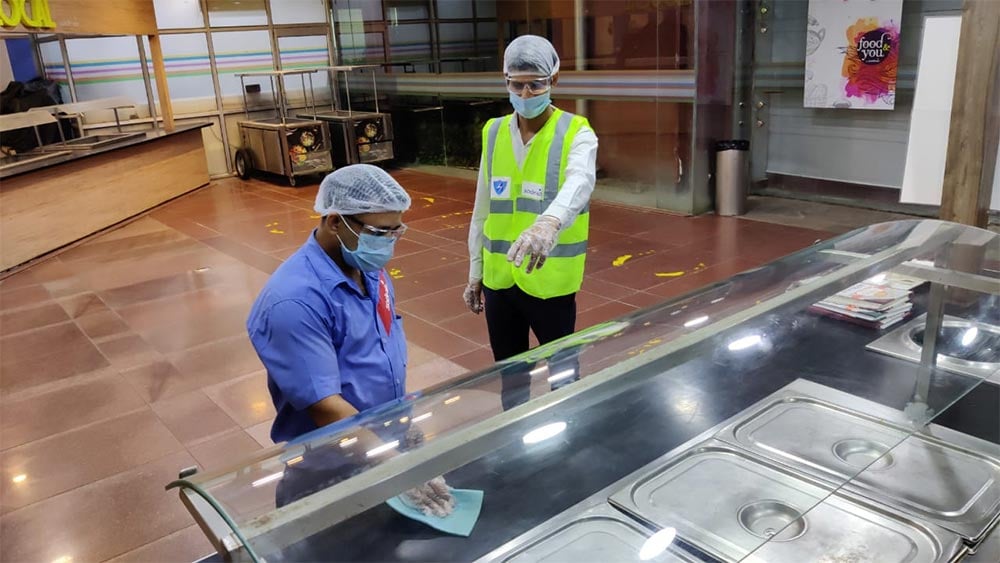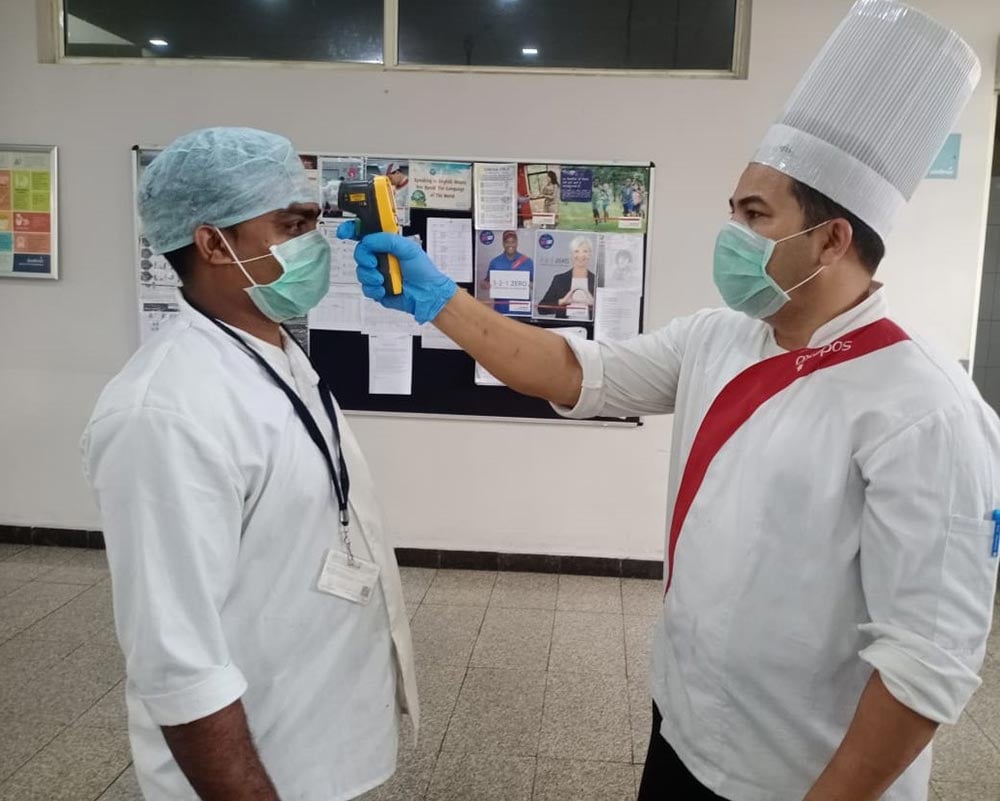
Preparing campuses to welcome students back with confidence
In this truly exceptional year, young learners, all over the world, have remained at home for months adapting to a learning environment they never imagined.
Pertinent questions echoing in the minds of the management team(s) of educational institutes, parents and students themselves have been – How to imbibe academics as well as extracurricular activities online? Is 100% transition to online learning the right practice? What would be its resultant impact in the long-term?
The views of students across the country are clearly visible in the University Lifestyle Survey 2020 conducted by Sodexo. Some of its highlights go as follows:
- Students no longer want to remain confined within their homes; they want to return to the campus life. 80% of the students expressed willingness to join back their campuses within the first month of reopening.
- With contact time reduced and with distance/online learning being introduced, students got worried about the quality of teaching that enables them to fulfill their academic goals. 2 in 5 students are worried about trusting their university on hygiene & safety matters and their ability to support students maintain their social lives.
- Almost 9 in 10 were happy with contact time pre-Covid-19, which now dropped to under 7 in 10. Students’ rating on value for money offered by Universities declined from 60% to 40% during Covid-19 period.
Educational institutes, likewise, need to ensure a safe campus environment for students, and reassure parents on the safety, health and hygiene measures adopted. In the survey, Maintenance of Safety and Hygiene, Physical Distancing among students, Risk of Infection and Lack of Vaccine was highlighted as the topmost concern by both educational institutes and parents. Majority educational institutions stated they would require an expert support in drafting Hygiene & Safety protocols, defining Physical Distancing guidelines and resuming essential services like low-touch meal services.
Facility Management for University Campus by Sodexo India
Plans to reopen education institutes will require management to re-imagine the campus environment in the context of the current pandemic to prepare for the safe return of the students. The process of re-creating environment will be based on 3 Guiding Principles - the 3Ps: Preparation, Precaution and Prevention.
Preparation - The campuses will have to formulate protocols and implement solutions for Preventive Preopening Disinfection as well as heightened hygiene and wellness, for regularly maintaining entire campus and facilities including classrooms, washrooms, cafeterias, libraries etc. In addition to this, important decisions will have to be taken by the education institutes based on these very important questions –

- Which levels of learners will be joining the campus first, to begin with?
- How many students can be safely accommodated in a class following the protocols of physical distancing?
- Will the students need to combine classroom learning with online learning?
- How can the curriculum be logically bifurcated between the face-to-face mode and the online mode?
- How to maintain wellness, preventive hygiene, and disinfection along with physical distancing among students every day throughout the campus?
- What will be the SOPs of handling an emergency arising out of detecting a corona positive suspect on the learning campuses along with a mitigation procedure of preventing it from spreading to other students and staffs?
Precaution - The campus should be clearly mapped before restarting offline classes safely. This would help the institute to critically assess its own capacity and abilities to provide protection and safety. All the areas in the campus should be clearly marked and delineated as per the following:

- Demarcate and color code areas as Very safe Zone (Green), Safe Zone (Yellow) and Unsafe Zone (Red).
- All classes, activities, sports and movement, entry and exit of learners should happen in the Safe Zone (Yellow) and Very safe Zone (Green).
- Entry of students should be totally restricted in the areas marked as Unsafe Zone which are typically accessed by external visitors.
- Identify areas for different activities and allocate specific time for use to different classes.
- Plan and allocate sufficient time for the back and forth movement of students from their classes to the playground, laboratories, library school etc. This would help mitigate the risk of mingling and crowding in the corridors and pathways.
- Identify a ‘Quarantine zone’ and keep it in a constant state of readiness to deal with an unexpected emergency.
Prevention – The campus holds great importance for students, but it has to be extended slowly to them. Taking a cue from schools in New Zealand, institutes in India need to create bubbles (groups) of a teacher and 10 students in a class, with the possibility of extending to 20, once schools begin to function smoothly. This is a sound strategy to be replicated for all batches, as it limits the interaction of students to a smaller group on a regular basis, thereby preventing exposure to a lot of different people every day. It would also be pragmatic for schools to have:

- Staggered Timings and 2-shift run: Keep the entry, exit and break timings of the students staggered to avoid crowding of students.
- Alternating Online and Offline Classes: To fulfill the requirement of physical distancing within the campus, classes should be divided into groups of approximately 1/3rd of the original strength; these should be called by turns to the school. Each group will get on an average 2 days of School Visits and 3 days of Online classes per week.
Education campuses will need to adopt and enforce heightened health and sanitation protocols. However, they are likely to confront trade-offs between effectiveness and feasibility in implementing such measures. Each campus will therefore need to evaluate its health and safety measures to fit its resources and capabilities across 5 major categories: physical infrastructure, scheduling and staffing, transportation and food service, health, and behavioral policies. Clearly, these efforts require global expertise and working with the right facility management and food solutions partner, with supreme focus on best-in-class health, hygiene, and safety practices. Ensuring vibrant, enriching, and safe campus experience is important for shaping our nation’s future and adjusting to the “THE NEW NORMAL”.
eduCARE by Sodexo can provide the right support
At Sodexo, we are equipped with India centric highly curated offering to restart campuses with advanced disinfection and campus management solutions. Through eduCARE, a comprehensive campus management solution, we help campuses to welcome students back to their own world.
The Ministry of Health & Family Welfare has already enacted guidelines that will help Education leaders, teachers and staff to navigate the reopening of the Education Institutes with defined safety protocols. By working together, sharing our global expertise and leveraging solid preparation and response planning, we are confident of providing the best possible response.
Our organisation is backed with the global expertise of advanced cleaning and campus management solutions currently serving 60 premium educational institutes in India. We serve 155,000+ healthy and nutritious meals every day and manage 26+ million sqft. of campus facilities, including complete maintenance of 6000+ residential hostel rooms.
As always, our teams are just a call away to discuss the appropriate response and to plan and prepare your education institute well ahead of time.
~ Nitin Trikha, Segment Director - Schools & Universities, Sodexo India